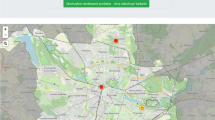Abstract
Place making is fundamental in creating human settlements. It is now understood that wholesome places cannot be created by professionals without the active participation of people who should be able to transform them as their own. Approaches to place making such as the Pattern Language of Christopher Alexander and Supports of Nabeel Hamdi attempted to engage people in the process in a number of ways. Participatory techniques are central to these practices, but there remain a paucity of appropriate techniques that can be adopted in facilitating people to articulate their perceptions useful to create places. This paper examines two psychological techniques; sorting task and location task and their applicability as practiced in a recent housing project implemented in Sri Lanka. The tasks divulged a number of facets of people’s conceptualizations of their settlements; those related to the present setting, the specific places in the existing settlement, those related to the imagined places and finally the desired geographical features of the imagined places. The paper then interprets and discusses how these conceptualizations have been directed towards articulating the spaces in the designed setting so that they could be transformed by the people to become wholesome places. It demonstrates that when the idea of ‘place’ is the focus of participatory practices and by using the techniques described, meaningful places can be effectively created.







Similar content being viewed by others
Notes
Understanding the idea of place and engaging this idea theoretically is different from simply talking about places. See Cresswell (2004) for a good discussion.
References
Alexander, C. (1977). A pattern language. Berkley, CA: Centre for Environmental Structure.
Alexander, C. (1985). The production of houses. Oxford: Oxford University Press.
Bernet, R., et al. (1993). Introduction to Husserlian phenomenology. Evanston: Northwestern University Press.
Bhatt, V. (1990). How the other half builds: Self selection process. Canada: McGill University.
Canter, D. V. (1977). Psychology of place. London: Architectural Press.
Canter, D. V. (1996). Ward development project. In Psychology in action. Dartmouth benchmark series (pp. 239–253). Hantshire: Dartmouth Publishing Company.
Canter, D. V., Brown, J., & Groat, L. (1985). A multiple sorting procedure for studying conceptual systems. In The research interview. London: Academic Press.
Canter, D. V., & Canter, S. (1979). Designing for therapeutic environments. Chichester: Wiley.
Ching, F. K. (1979). Architecture: form space and order. New York: Van Nostrand Reinhold.
Coxon, A. P. M. (1999). Sorting data: collection and analysis. Thousand Oaks, CA: Sage.
Cresswell, T. (2004). Place: A short introduction. Oxford: Blackwell.
Day, C. (1990). Places of the soul: Architecture and environmental design as a healing art. Oxford: Architectural Press.
Dayaratne, R. (1992) Sopporting people’s placemaking: theory and practice. Unpublished PhD Thesis, University of Newcastle upon Tyne, UK.
Dayaratne, R. (2014). Towards regenerating urban places: A phenomenological approach to understanding people-place relations in cities, keynote speech at the Asia Pacific Conference on Environment-Behaviour Studies, AcE-Bs 2014, Chung-Ang University, South Korea.
Dovey, K. (1985). Place and place-making conference proceedings. Australia: RMIT University.
Dovey, K. (1999). Framing places mediating power in built-form. New York: Routledge.
Dovey, K. (2010). Becoming places, urbanism, architecture, identity, power. New York: Routledge.
Downton, P. (2004). Design research. Melbourne: RMIT University Press.
Fisher, T. (2004) Architects Behaving badly, Havard Design Magazine, Number 21.
Groat, L. (1982). Meaning in post modern architecture: An examination using the multiple sorting task. Journal of Environmental Psychology, 2(1), 3–22.
Habraken, J. (1983). Transformations of the site. Cambridge, MA: Awater Press.
Hamdi, N. (1992). Housing without houses. New York: Van Nostrand Reinhold.
Heidegger, M. (1962). Being and time. New York: Harper and Row.
Honikmann, B. (1976). Construct theory as an approach to architectural and environmental design. In P. Slater (Ed.), Explorations of interpersonal space (Vol. 1). London: Wiley.
Hulin, W. S., & Katz, D. (1935). The Frois-Wittmann pictures of facial expression. Journal of Experimental Psychology, 18, 482–498.
Imai, S. (1966). Classification of sets of stimuli with different stimulus characteristics and numerical properties. Perception and Psychophysics, 1, 48–54.
Jacquet, B., & Giraud, V. (2012). Introduction, from the things themselves. Architecture and phenomenology. Kyoto: Kyoto University Press, EFEO.
Kelly, G. (1955). The psychology of personal constructs. New York: WW Norton.
Lang, J. (1987). Creating architectural theory: The role of behavioural sciences. New York: Van Nostrand Reinhold.
Lawless, H. T. (1989). Exploration of fragrances categories and ambiguous odors using multidimensional scaling and cluster analysis. Chemical Senses, 14, 349–360.
Lawless, H. T., & Glatter, S. (1990). Consistency of multidimensional scaling models derived from odor sorting. Journal of Sensory Studies, 5, 217–230.
Lynch, K. (1960). Image of the city. Cambridge, MA: MIT Press.
MacRae, A. W., Rawcliffe, T., Howgate, P., & Geelhoed, E. N. (1992). Patterns of odour similarity among carbonyls and their mixtures. Chemical Senses, 17, 119–125.
Meiss, V. (1986). Elements of architecture: from form to place. New York: Van Nostrand Reinhold.
Merleau-Ponty, M. (1962). The phenomenology of perception. New York: Humanities Press.
Miller, G. A. (1969). A psychological method to investigate verbal concepts. Journal of Mathematical Psychology, 6, 169–191.
Norberg-Schultz, C. (1992). Intentions in architecture. Cambridge, MA: MIT.
Pallasma, J. (2005). Eyes of the skin. Britain: Wiley.
Peled, A. (1976). The Strathclyde location test. In P. Suedfeld & J. A. Russel (Eds.), The behavioural basis of design. Hutchinson and Ross: Dowden.
Peled, A. (1989). The exploration of meaning in environmental education. The Journal of Environmental Education, 21(1), 19–25.
Peled, A (2015) I-place counseling. http://www.livedplace.co.il/101133/-i-place. Accessed December 25, 2015.
Rapoport, A. (1994a). A critical look at the concept ‘place’. National Geographic Journal of India, 40, 4–19.
Rapoport, A. (1994b) Sense and nonsense of place. In Proceedings of the place and development conference. University of Newcastle upon Tyne, UK.
Sanoff, H. (1990). Participatory design: Theory and techniques. USA: Book Masters.
Seamon, D., & Mugerauer, R. (1985). Dwelling, place and environment: Towards a phenomenology of person and world. Dordrecht: Nijhoff.
Stevens, D. A., & O’Connell, R. J. (1996). Semantic-free scaling of odor quality. Physiological Behavior, 60, 211–215.
White, W. F. (1943). Street corner society: The social structure of an Italian slum. Chicago: University of Chicago Press.
Acknowledgments
The author acknowledges the contribution made by the SEL in carrying out this experiment as part of their housing program and bearing out the additional time and financial repercussions of this activity. It also acknowledges the support of the Design Concepts Architects.
Author information
Authors and Affiliations
Corresponding author
Rights and permissions
About this article
Cite this article
Dayaratne, R. Creating places through participatory design: psychological techniques to understand people’s conceptions. J Hous and the Built Environ 31, 719–741 (2016). https://doi.org/10.1007/s10901-016-9497-2
Received:
Accepted:
Published:
Issue Date:
DOI: https://doi.org/10.1007/s10901-016-9497-2




